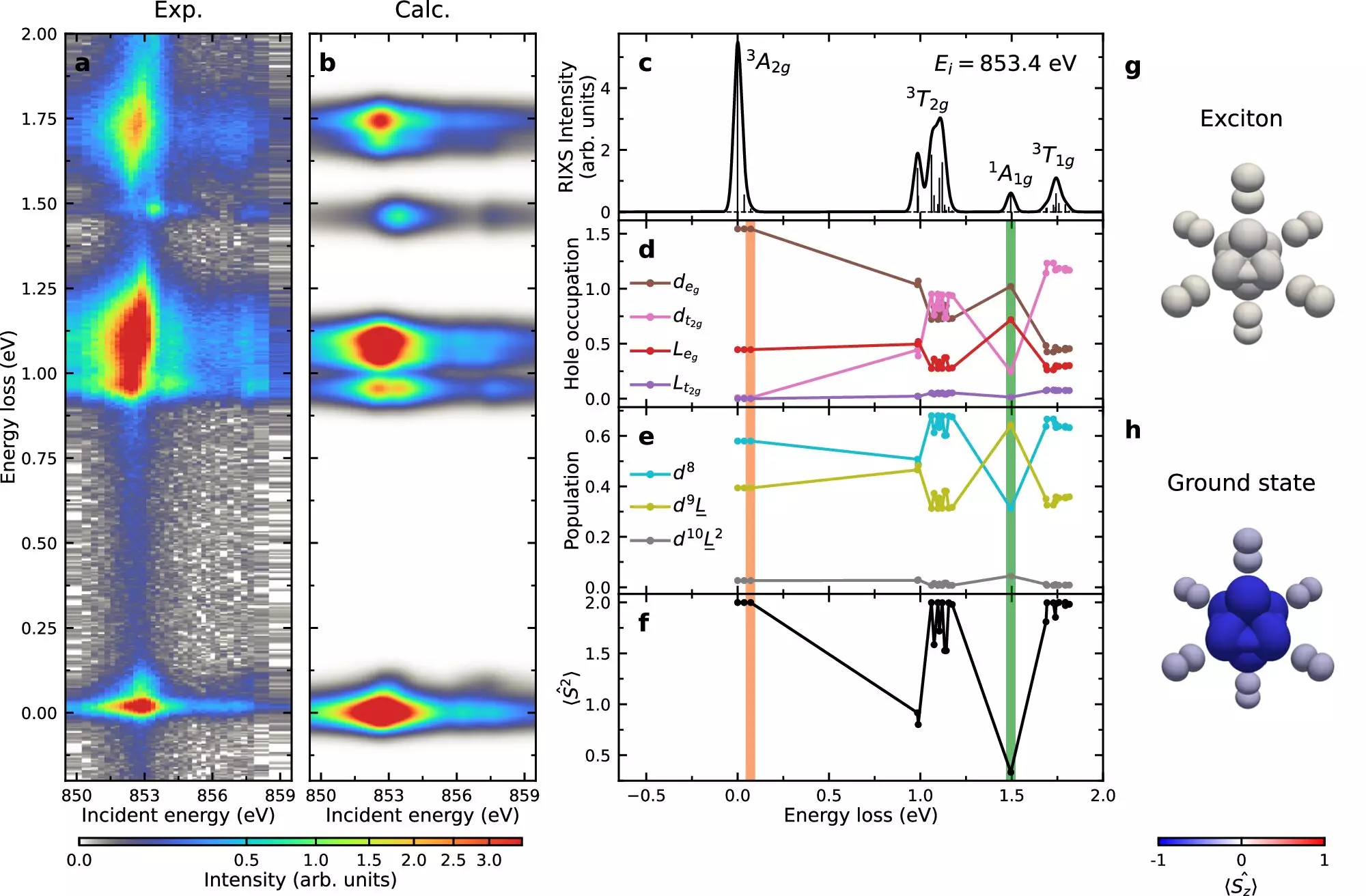In recent years, the field of condensed matter physics has captivated researchers with the potential of discovering groundbreaking phenomena within exotic materials. One area of focus has emerged around van der Waals magnets, a class of materials that display unique electronic and magnetic properties due to their layered structures. Among the myriad of discoveries in this domain, excitons—quasi-particles formed from the coupling of electrons and their corresponding vacancies, known as holes—are drawing particular attention. Recent findings led by scientists at the U.S. Department of Energy’s Brookhaven National Laboratory have shed light on the intricate formation and behavior of excitons within nickel phosphorus trisulfide (NiPS3), a well-studied van der Waals magnet. This research not only enhances our understanding of these fascinating materials but also hints at their potential application in future technologies.
Excitons play a crucial role in the optical properties of materials, acting as mediators in processes like energy transfer and photon absorption. Their exploration opens new avenues for advancing optoelectronic devices, including those for information storage and processing. The discovery of excitons in NiPS3 is particularly compelling because it establishes a relationship between excitonic behavior and the material’s underlying magnetic properties. This relationship could lay the foundation for developing advanced technologies based on magnetism, thus bridging the gap between electronic and magnetic functionalities. The findings, published in *Nature Communications*, mark an important milestone in both fundamental research and applied physics.
Utilizing Advanced Techniques for Unprecedented Insights
To delve deeper into the properties of excitons in NiPS3, the research team employed a sophisticated technique known as resonant inelastic X-ray scattering (RIXS). This method, conducted at the National Synchrotron Light Source II (NSLS-II), offered unparalleled insights into the material’s electronic configurations. By generating coherent X-ray beams, scientists could interact with the excitons and glean information about their dynamics and structure. In doing so, they utilized advanced computational tools to analyze scattered photons and correlate their energy states, ultimately revealing the underlying principles governing exciton formation.
The results indicated that the behavior of excitons in NiPS3 is largely influenced by the Hund’s exchange interaction, which regulates how electron spins within the material interact energetically. This interaction essentially defines the conditions under which excitons can form and propagate. The researchers noted a striking similarity between the dispersal of excitons and that of double-magnons—a different type of quasi-particle related to spin disturbances—underscoring the interplay between electron and magnetic dynamics within this unique crystalline structure.
As the scientific community continues to explore the properties of van der Waals magnets, the work on NiPS3 serves as a stepping stone for further investigations. The authors of the study, including postdoctoral researcher Wei He, expressed optimism about the potential evolution of experimental techniques, including advancements in RIXS and electron microscopy. These innovations are expected to allow for more precise measurements, establishing clearer connections between magnetism and excitonic behavior.
One area worth exploring is the scalability of excitons in various other van der Waals materials. A deeper understanding of their dynamics, especially in relation to different magnetic configurations, can foster exciting developments in material science, especially concerning two-dimensional systems. Furthermore, clarifying how these phenomena can be harnessed for practical applications, such as next-generation memory devices and quantum computing systems, remains a high priority for researchers in this field.
The exploration of excitons within van der Waals magnets exemplifies the forefront of modern physics’ quest for knowledge. The interplay between optics and magnetism within these materials not only enhances our understanding of fundamental processes in condensed matter but also pushes the boundaries of technology. The insights gained from NiPS3 offer a tantalizing glimpse into the future, with possible applications on the horizon. As research continues to evolve, the profound implications of exciton behavior in materials exploration may pave the way for breakthroughs that redefine our interaction with both electronic and magnetic technologies.


Leave a Reply